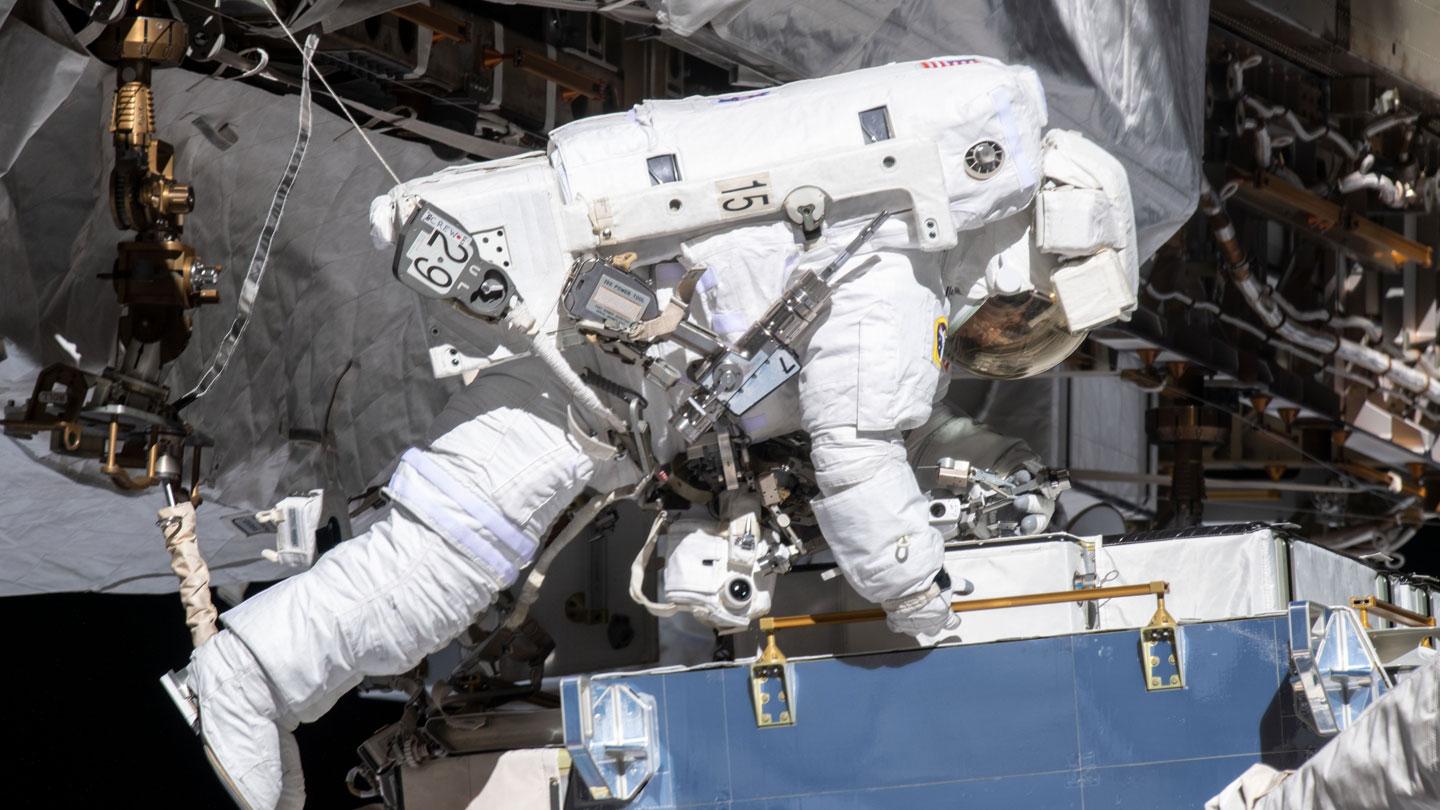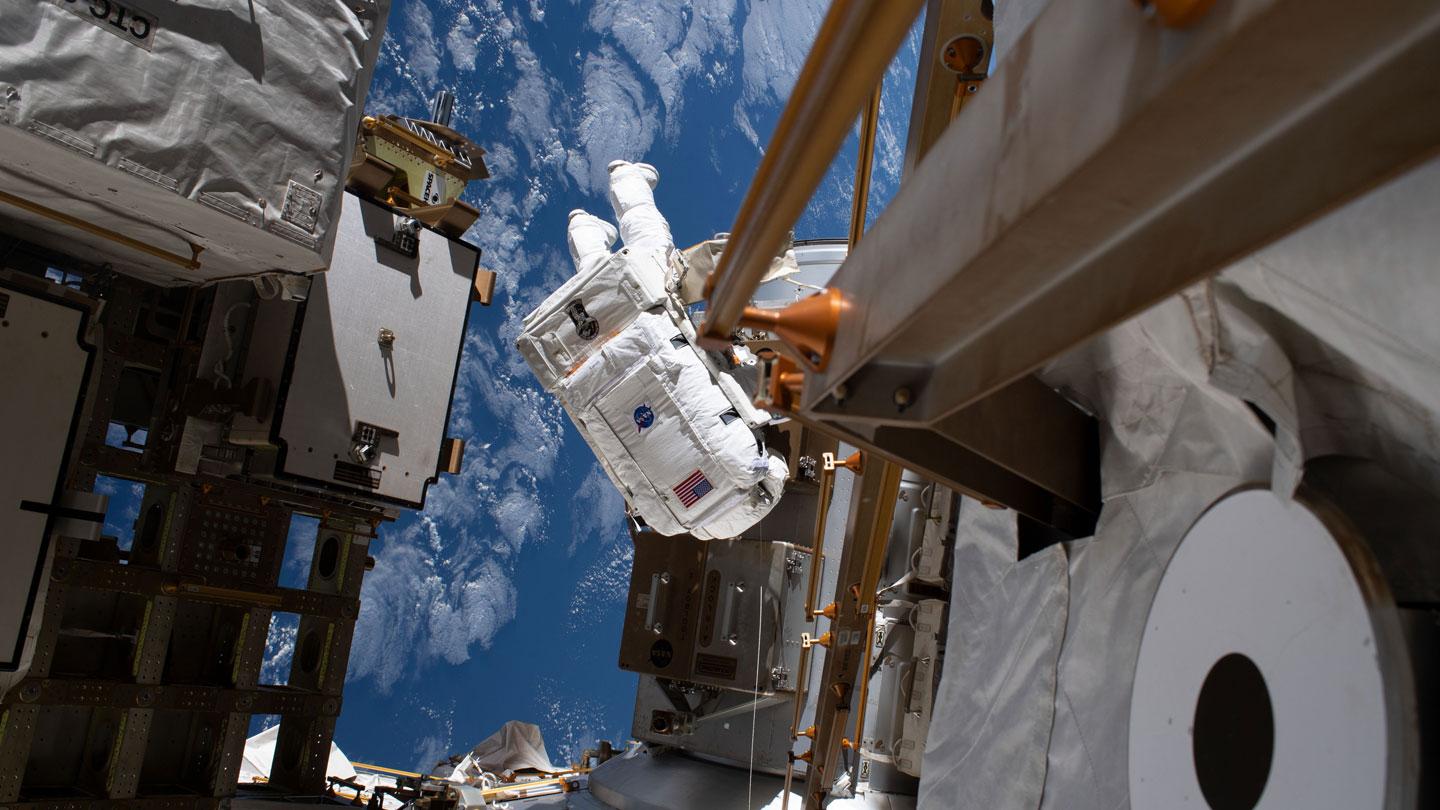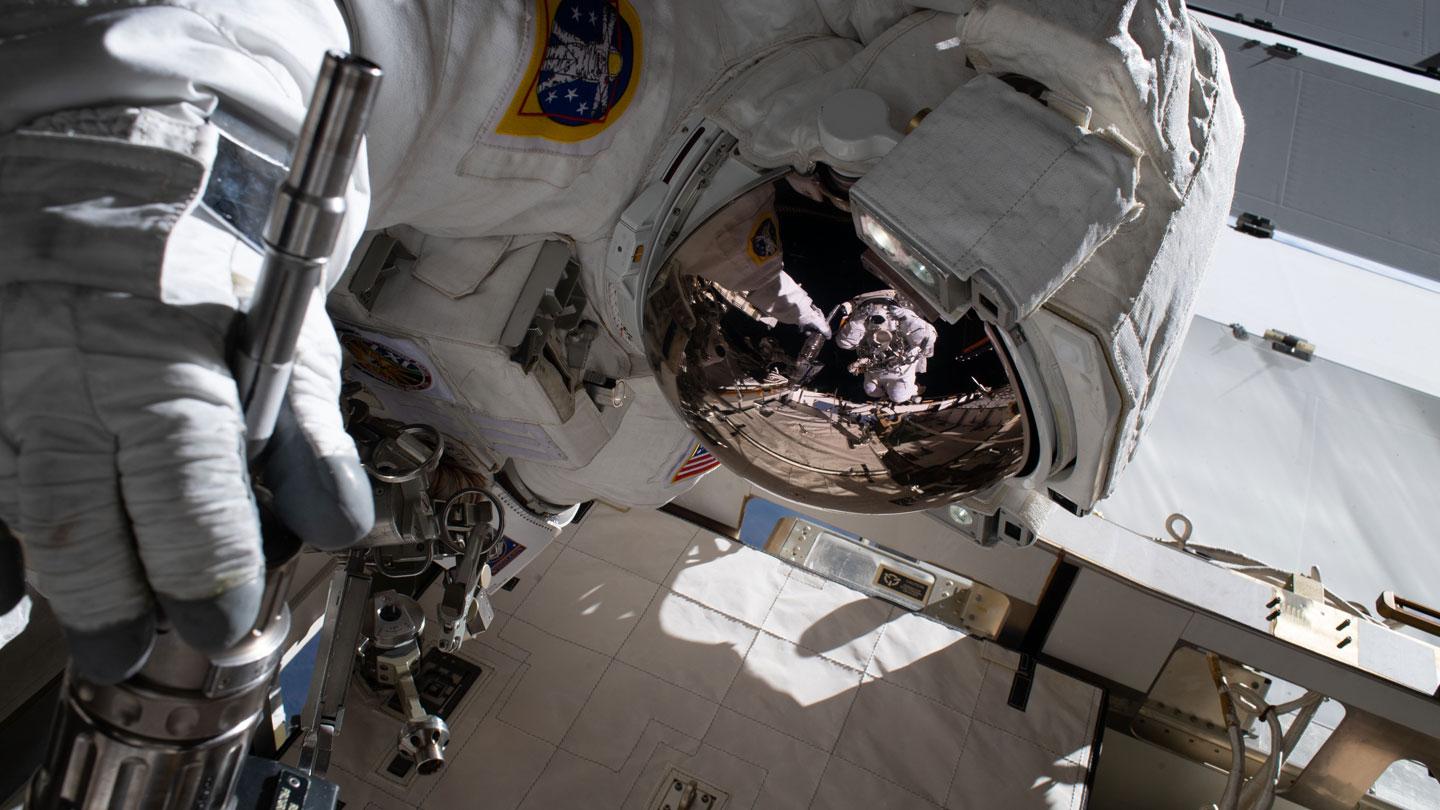Making a Good Fit, Great: KBR Manages Spacesuits for Historic Female Spacewalk
How can astronauts venture outside their space vehicles in minus 250 degrees Fahrenheit? What puts the “walk” in a spacewalk? A spacesuit, of course.
On Oct. 18, 2019 NASA astronauts Jessica Meir and Christina Koch performed a seven-hour extravehicular activity (EVA), also known as a spacewalk, to replace a battery component on the exterior of the International Space Station. More than 200 spacewalks have been completed throughout the past two decades, but this routine maintenance procedure made headlines for being the first spacewalk completed by two women.
KBR helped NASA take this historic step through its work with Extravehicular Mobility Units (EMUs), commonly referred to as spacesuits. Prior to any given spacewalk, KBR is behind the scenes at NASA playing an integral role in identifying sizes for all suit components, maintaining suit data, testing and evaluating the parts and assisting with suit training for astronauts.
Spacesuit fit and use training is crucial to the success of each mission. To ensure precision, the crewmember’s body is measured via laser scanning. KBR inputs these results through various algorithms to predict the sizes needed for each part of the astronaut’s spacesuit for fit checks.
KBR Suit Engineer and Flight Coordinator Roger Graham worked with both Meir and Koch personally to support their flight-specific training events related to the suits.
“I followed their flight assignment flow from their first Neutral Buoyancy Laboratory (NBL) training event through their EVAs. I was responsible for their EMU sizing and all accompanied options worn inside the suit,” Graham said.
Alongside Graham, KBR Back-up Suit Engineer and fellow Flight Coordinator Luciana Zucconi also attended both suited and non-suited astronaut training operations involving the EMU and EVA hardware leading up to the walk.
One of these exercises took place at the NBL in Houston, the world’s largest indoor pool filled with 6.2 million gallons of water. At the bottom of the pool sits a full-scale replica of the space station. Though astronauts are not truly weightless while underwater, they are considered neutrally buoyant. This means an object does not sink or float, simulating microgravity.
NBL training allows the astronauts to hone in on their skills and learn how to use the tools they will need during their spacewalk, practicing tasks dozens of times before ever leaving Earth. Likewise, this training offers crew members a chance to make sure their suit fits properly during all activities.
KBR also supported vacuum chamber events, where astronauts are placed into a vacuum test facility wearing a flight EMU. During these events, the astronauts are trained to assess the capabilities of high-fidelity space hardware. Similar to NBL training, both Graham and Zucconi were responsible for suit up sizing, adjustments and associated crew options.
Before any spacewalk, KBR supports an on-orbit fit verification with the astronauts on the space station to help identify problems before they arise, recommend what components to change and perform checks for anything out of the ordinary. During this fit verification exercise in space, the crew suits up, pressurizes the suit, and responds to the ground by reading a checklist and giving feedback regarding suit fit.
“We create a troubleshooting matrix for the Capsule Communicator (CAPCOM) to read back with any adjustments that may be needed due to spinal growth, or any other fit issues that weren’t expected on the ground,” Zucconi said.
Achieving an optimal suit fit takes time and experience, but it is also an interactive process that requires open communication between the crewmember and suit engineers.
“I have worked with several astronaut classes, starting in 1995, and this class is one of the most forthcoming with information regarding their suit fit,” Graham said. “This is extremely beneficial, as we can now ‘make a good fit, great’!”
During this historic spacewalk, the KBR team sat on-site at NASA’s Johnson Space Center in Houston as they normally do.
“We provide backroom support for mission control during real-time, EMU-related activities,” said KBR Lead Technical Point of Contact Manager Marques Lynch. “The EVA was a success and the women completed all assignments with no complications.”
Only 15 women have participated in a fraction of the 451 spacewalks throughout history. Reflecting on the important day, Zucconi noted how glad she was to be a part of this pioneering achievement.
“Women have been in space for a long time, but until now have completed spacewalks alongside men. I am so proud of these ladies, and very proud to be part of this effort,” she said.
“Throughout Christina and Jessica’s training, I have observed their hard work and dedication. It is exciting to have direct relationships with two female astronauts who made history – especially for women in STEM.”






